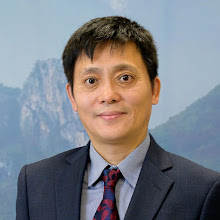Herbs have been widely used to
treat disease all over the world. In China, the use of herbal medicine (HM) became
an important part of Traditional Chinese Medicine (TCM). In Europe and America HM
gradually developed into Western Herbal Medicine (WHM). There are some
commonalities and some differences between TCM and WHM. We compared the history,
basic theory, function and clinic application of commonly used crossover herbs
in TCM and WHM. Through this comparison we hope to build a bridge between Chinese
and western herbalists, to exchange ideas and clinical applications of some crossover
herbs.
History comparison
Human use of natural plants to
treat illness can be traced back for thousands of years. Since the origin of
humanity, our ancestors started to use herbs to relieve certain symptoms. The
first classic about TCM theory is Yellow
Emperor's Canon of Traditional Chinese Medicine (Huangdi Neijing). It was written during the Warring States Period (475 BC – 221 BC). Nearly at the
same time, in ancient Greece Hippokrates (460 BC-370 BC) published the humoral theory which became the
basis of WHM.
The first classic book about TCM herbs
is Shennong's
Herbal. It was written at early stage
of Eastern Han Dynasty (AD25-220), 365 herbs were recorded in this book. The
first classic of western herbs is De
Materia Medica which was written between 50 --70 AD by Pedanius Dioscorides, a Greek origin Roman physician. About 600 plants were recorded. Both TCM and
WHM have a long history, their basic philosophy was established at nearly the
same time – about 2400 years ago.
Basic theory comparison:
Eastern and western cultural differences
determined that from their inception TCM and WHM were based on different theories.
TCM is based on the theory of Yin/Yang, five elements, Qi/blood, Zang Fu and
meridians, and all the herbs are classified in Four Natures (Cold, heat, warm
and cool) and Five Flavours (sour, bitter, sweet, pungent
and salty). The hot and warming herbs belong to yang, suitable to treat cold
syndromes; the cold and cooling herbs belong to yin, suitable to treat heat
syndromes. The five flavours are matched to the five elements and five zang
organs (liver, heart, spleen, lung and kidney). Each herb has a selective
function to some part of the body. It may have strong effect on one or some
meridians, but has little effect on other meridians. This is called ‘channel tropism’. For example, many herbs are
described as ‘heat clearing’, but because channel tropisms vary, Huanlian (Rhizoma Coptidis) is used to clear heart and stomach fire; Longdancao
(Radix Gentianae ) is used to clear liver and gallbladder fire; and Huangqin (Radix Scutellariae) is used to clear lung heat.
In TCM the
5 elements are linked with internal organs, people’s emotions, seasons, weather
and environment.
WHM is
originally based on the theory of humoral medicine, four elements,
Physio-medicalism and the interaction and function of the entire body as a
whole terrain. A Holistic patient oriented approach.
The following
results can be obtained from the
above compare:
1) The origin and history of TCM and WHM is
similar. They both have a very long history.
2) Although they
are based on different theories, TCM and WHM both believe the universe is composed
of some basic elements. Compare TCM’s five elements and WHM’s four elements: we
find three elements are exactly the same.
3) TCM and WHM both
believe these basic elements are connected to internal organs, and related to people’s
moods or emotions, the seasons, weather and environment.
4) TCM and WHM both
incorporate holistic concepts; they agree that the entire body functions as an
organic whole.
5) TCM and WHM have many similar or exactly the
same indications for some herbs. For example: Angelica
(Danggui) was used as a blood nutrition agent and a menstrual regulator and female
tonic; Ephedra Ephedra sinica (Mahuang) was used to treat asthma.
6) For some other herbs TCM and WHM have some
different indications. For example: In TCM Mint (Bohe) is used to expel early
stage measles, but in WHM it was used as a spasmolytic in some conditions; Ginger
(Sheng Jiang) is used to treat nausea & vomiting in both TCM & WHM, but
it is also used as an anti-platelet and antipyretic in WHM. In TCM’s opinion it
is a pungent & warm herb, only suitable for wind-cold syndrome, not
suitable for wind-heat syndrome.
7) To explain the functions of herbs, TCM uses
more traditional theory and terminology like yin/yang; cold/heat; deficiency/excess;
qi and meridians; WHM uses more modern medicine terminology like
anti-inflammatory, anti-allergic, anti-microbial, anti-Ulcer, etc.
Modern
medicine mainly uses chemical synthetic drugs to treat disease. A lot of side
effects have been found for most pharmaceutical drugs. Many drugs works well to
treat one disease but their side effects may cause new diseases. In some conditions
drug addiction and drug resistance are difficult to avoid. Humans need an
alternative approach to maintain their health and life. Herbal medicine is a
wise choice.
Herbal
medicine comes from natural plants; flowers, seeds, leaves, branches, roots and
barks. Compared to chemical synthetic drugs
they are much safer and cause fewer side effects. Some herbs can reduce the
side effects of chemical drugs when they are combined together. The effect of
herbs has been proved by countless cases through thousands of years’ practice. In
the east and west of the world, our ancestors
leave us a great treasure – herbal medicine.
It is our inheritance and our
responsibility to develop this treasure and hand it down to next generation.
TCM
and WHM are two main branches of natural herbal therapy. From basic theory to
clinical indications they have many similar opinions. For a long time, the
practitioners of these two traditions lacked communication, they practiced
separately, and did not know much about each other. We hope this crossover
study between two different subjects will bring about some new ideas in both
TCM and WHM.

